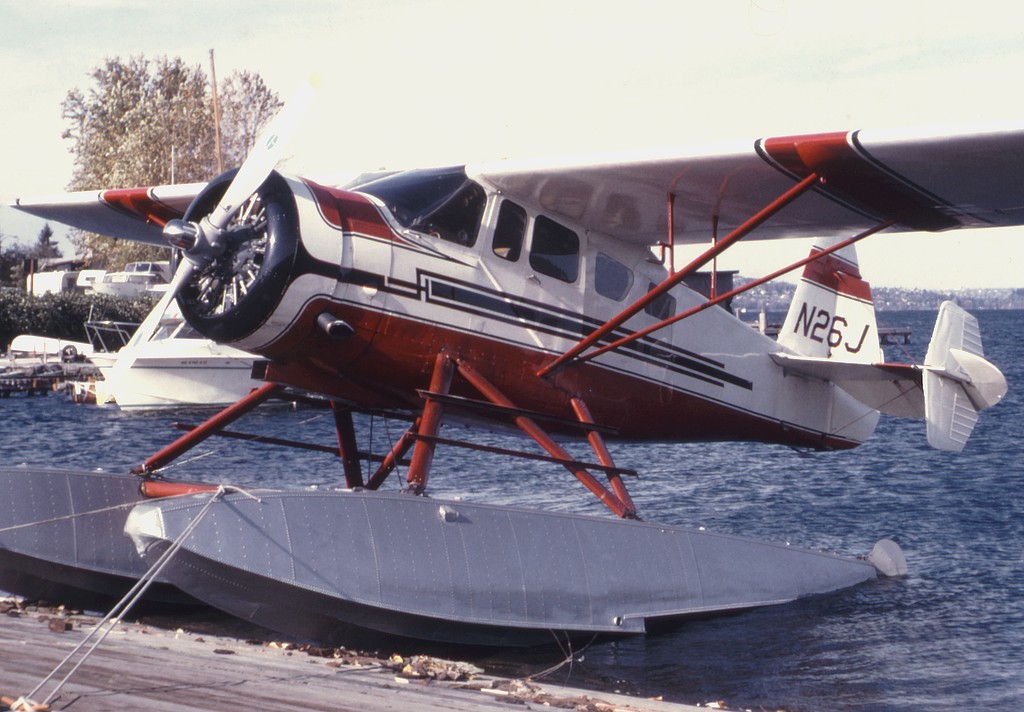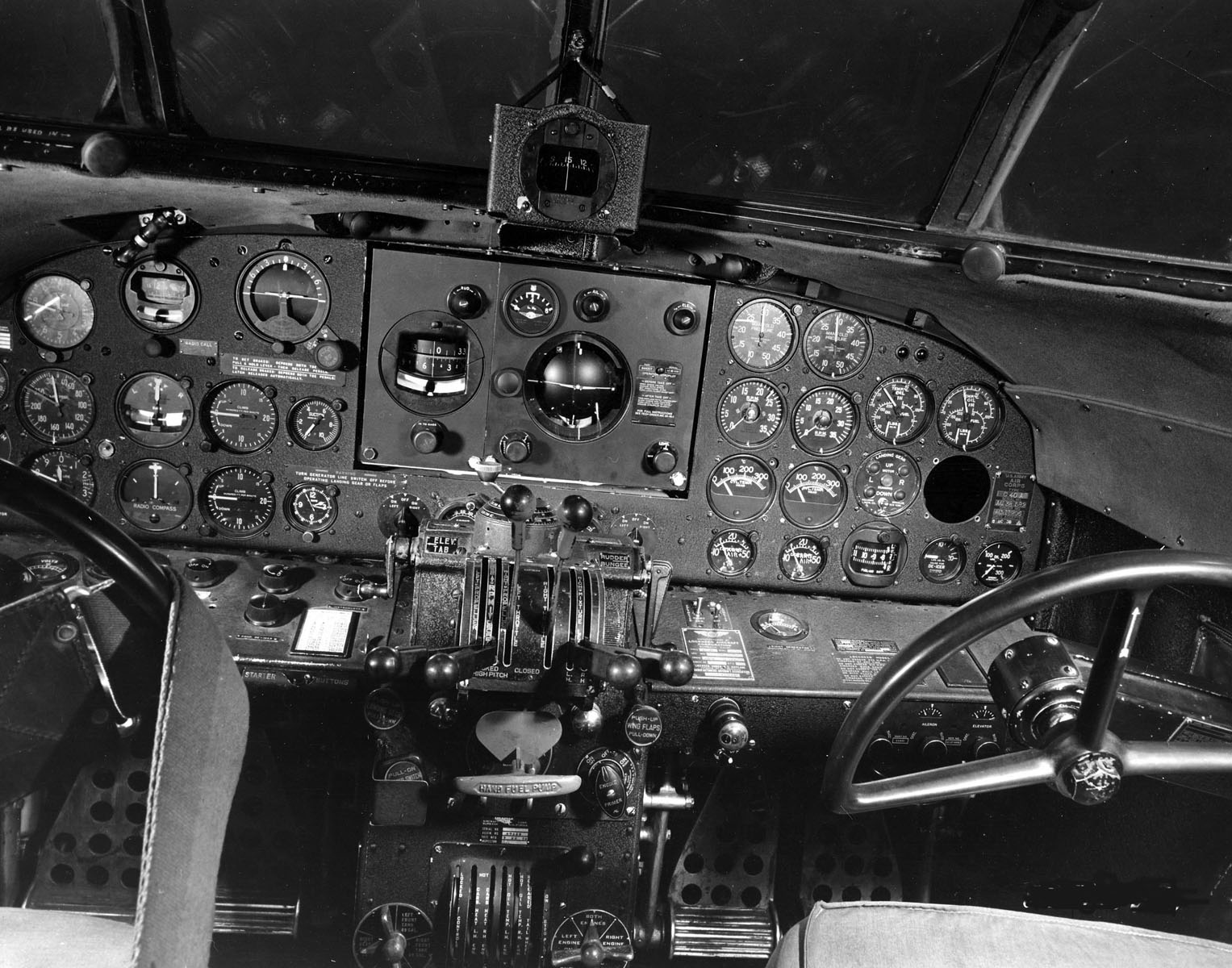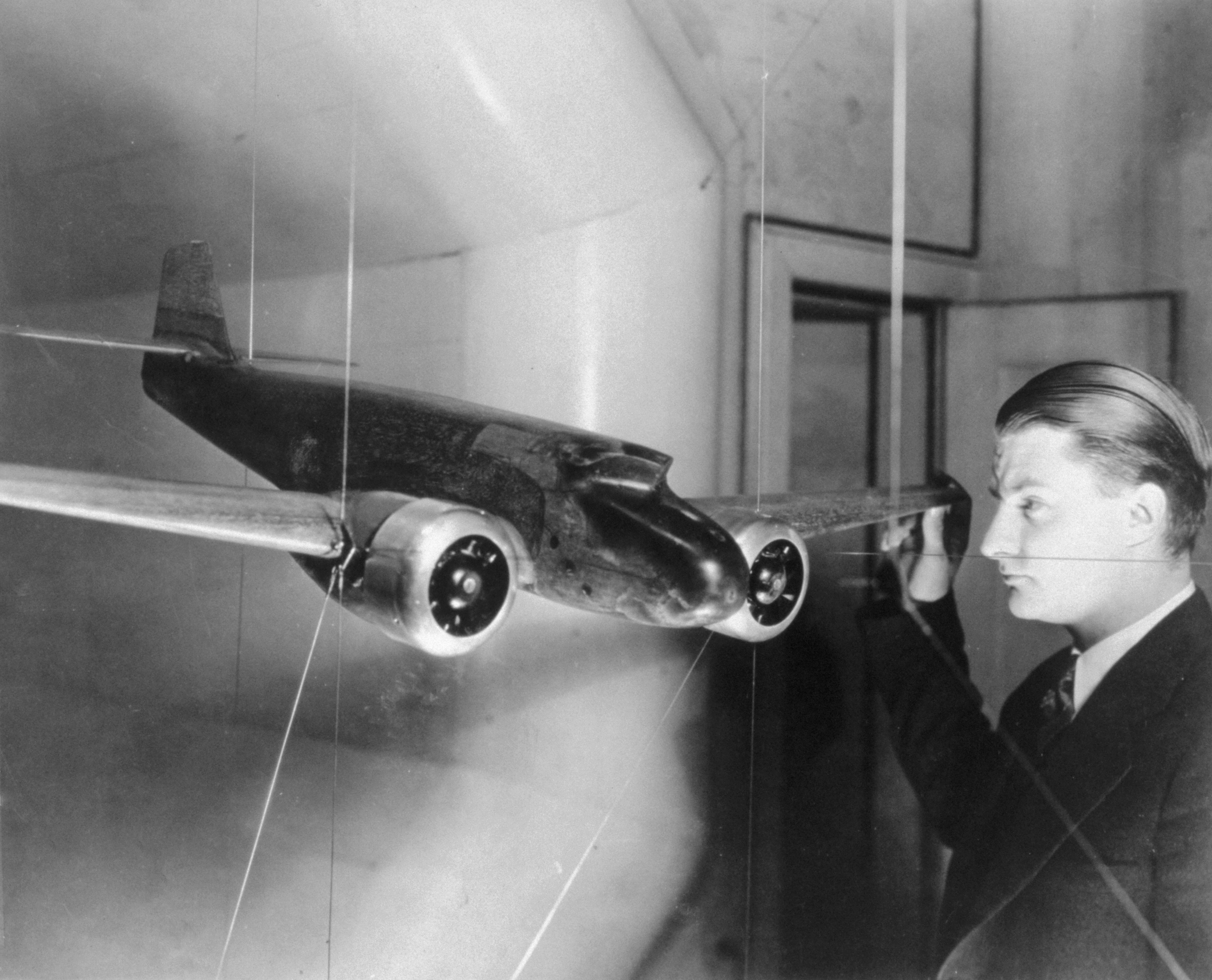|
Pratt And Whitney R-985
The Pratt & Whitney R-985 Wasp Junior is a series of nine-cylinder, air-cooled, radial aircraft engines built by the Pratt & Whitney Aircraft Company from the 1930s to the 1950s. These engines have a displacement of ; initial versions produced , while the most widely used versions produce . Wasp Juniors have powered numerous smaller civil and military aircraft, including small transports, utility aircraft, trainers, agricultural aircraft, and helicopters. Over 39,000 engines were built, and many are still in service today. Design and development Pratt & Whitney developed the R-985 Wasp Junior as a smaller version of the R-1340 Wasp to compete in the market for medium-sized aircraft engines. Like its larger brother, the Wasp Junior was an air-cooled, nine-cylinder radial, with its power boosted by a gear-driven single-speed centrifugal type supercharger. Its cylinders were smaller, however, with a bore and stroke of , giving a 27% lesser total displacement. The Wasp Junior used ... [...More Info...] [...Related Items...] OR: [Wikipedia] [Google] [Baidu] |
WikiProject Aircraft
A WikiProject, or Wikiproject, is a Wikimedia movement affinity group for contributors with shared goals. WikiProjects are prevalent within the largest wiki, Wikipedia, and exist to varying degrees within sister projects such as Wiktionary, Wikiquote, Wikidata, and Wikisource. They also exist in different languages, and translation of articles is a form of their collaboration. During the COVID-19 pandemic, CBS News noted the role of Wikipedia's WikiProject Medicine in maintaining the accuracy of articles related to the disease. Another WikiProject that has drawn attention is WikiProject Women Scientists, which was profiled by '' Smithsonian'' for its efforts to improve coverage of women scientists which the profile noted had "helped increase the number of female scientists on Wikipedia from around 1,600 to over 5,000". On Wikipedia Some Wikipedia WikiProjects are substantial enough to engage in cooperative activities with outside organizations relevant to the field at issue. For e ... [...More Info...] [...Related Items...] OR: [Wikipedia] [Google] [Baidu] |
Pratt & Whitney R-1340
The Pratt & Whitney R-1340 Wasp is an aircraft engine of the reciprocating type that was widely used in American aircraft from the 1920s onward. It was the Pratt & Whitney aircraft company's first engine, and the first of the famed Wasp series. It was a single-row, nine-cylinder, air-cooled, radial design, and displaced 1,344 cubic inches (22 L); bore and stroke were both 5.75 in (146 mm). A total of 34,966 engines were produced. As well as numerous types of fixed-wing aircraft, it was used to power helicopters, the Agusta-Bell AB.102 and the Sikorsky H-19, and a class of airship, the K-class blimp. In 2016, it received designation as a Historic Engineering Landmark from the American Society of Mechanical Engineers. Variants ''Note:'' R for Radial and 1340 for 1340 cubic inch displacement. ;R-1340-7: , ;R-1340-8: ;R-1340-9: , ;R-1340-16: ;R-1340-17: ;R-1340-19: ;R-1340-19F: ;R-1340-21G: ;R-1340-22: ;R-1340-23: ;R-1340-30: ;R-1340-31: ;R-1340-33 ... [...More Info...] [...Related Items...] OR: [Wikipedia] [Google] [Baidu] |
Spartan Executive
The Spartan 7W Executive is a cabin monoplane aircraft that was produced by the Spartan Aircraft Company during the late 1930s and early 1940s. The 7W features an all-metal fuselage, as well as a retractable undercarriage. The 7W Executive was popular with affluent buyers worldwide."American airplanes: Spartan." ''Aerofiles''. Retrieved: August 27, 2017. Design and development Designed expressly for the executive market, the Spartan Executive was configured for both performance and comfort. Built during the , the 7W was the brainchild of company-founder William G ...[...More Info...] [...Related Items...] OR: [Wikipedia] [Google] [Baidu] |
Howard DGA-15
The Howard DGA-15 was a single-engine civil aircraft produced in the United States by the Howard Aircraft Corporation from 1939 to 1944. After the United States' entry into World War II, it was built in large numbers for the United States Navy and also served various roles in the United States Army Air Forces. Design and development The Howard Aircraft Company (later Howard Aircraft Corporation) was formed in 1936 to build commercial derivatives of the Howard DGA-6 (named ''Mister Mulligan''),Bushell 1987, p.42. a successful four-seat racing aircraft which had won both the Bendix Trophy, Bendix and the Thompson Trophy, Thompson Trophies in 1935, the only aircraft ever to win both races.Bushell 1987, pp.40-41. These successes did indeed bring the DGA series much attention, and Howard produced a series of closely related models differing mainly in the engine type, consisting of the DGA-7, -8, -9, -11 and -12. Offering high performance and being comprehensively equipped, despite a ... [...More Info...] [...Related Items...] OR: [Wikipedia] [Google] [Baidu] |
Amphibious Aircraft
An amphibious aircraft or amphibian is an aircraft (typically fixed-wing) that can take off and land on both solid ground and water, though amphibious helicopters do exist as well. Fixed-wing amphibious aircraft are seaplanes ( flying boats and floatplanes) which are equipped with retractable wheels, at the expense of extra weight and complexity, plus diminished range and fuel economy compared to planes designed specifically for land-only or water-only operation. Some amphibians are fitted with reinforced keels which act as skis, allowing them to land on snow or ice with their wheels up. Design Floatplanes often have floats that are interchangeable with wheeled landing gear (thereby producing a conventional land-based aircraft). However, in cases where this is not practical, amphibious floatplanes, such as the amphibious version of the DHC Otter, incorporate retractable wheels within their floats. Many amphibian aircraft are of the flying boat type. These aircraft, and t ... [...More Info...] [...Related Items...] OR: [Wikipedia] [Google] [Baidu] |
Grumman Goose
The Grumman G-21 Goose is an amphibious flying boat designed by Grumman to serve as an eight-seat "commuter" aircraft for businessmen in the Long Island area. The Goose was Grumman's first monoplane to fly, its first twin-engined aircraft, and its first aircraft to enter commercial airline service. During World War II, the Goose became an effective transport for the US military (including the United States Coast Guard), as well as serving with many other air forces. During hostilities, the Goose took on an increasing number of combat and training roles. Design and development In 1936, a group of wealthy residents of Long Island, including E. Roland Harriman, approached Grumman and commissioned an aircraft that they could use to fly to New York City."Goose." ''Antilles Seaplanes history page''. Retrieved: August 30, 2008. In response, the G ... [...More Info...] [...Related Items...] OR: [Wikipedia] [Google] [Baidu] |
Lockheed Model 12 Electra Junior
The Lockheed Model 12 Electra Junior, more commonly known as the Lockheed 12 or L-12, is an eight-seat, six-passenger all-metal twin-engine transport aircraft of the late 1930s designed for use by small airlines, companies, and wealthy private individuals. A smaller version of the Lockheed Model 10 Electra, the Lockheed 12 was not popular as an airliner but was widely used as a corporate and government transport. Several were also used for testing new aviation technologies. Design and development After Lockheed had introduced its 10-passenger Model 10 Electra, the company decided to develop a smaller version which would be better suited as a " feeder airliner" or a corporate executive transport.O'Leary 2001, p. 1. At the same time, the U.S. Bureau of Air Commerce had also sensed the need for a small feeder airliner and announced a design competition for one. In order for a candidate to qualify for the competition, a prototype had to fly by June 30, 1936.O'Leary 2001, p. 3. Lockhe ... [...More Info...] [...Related Items...] OR: [Wikipedia] [Google] [Baidu] |
Lockheed Model 10 Electra
The Lockheed Model 10 Electra is an American twin-engined, all-metal monoplane airliner developed by the Lockheed Aircraft Corporation in the 1930s to compete with the Boeing 247 and Douglas DC-2. The type gained considerable fame as one was flown by Amelia Earhart on her ill-fated around-the-world expedition in 1937. Design and development Some of Lockheed's wooden designs, such as the Orion, had been built by Detroit Aircraft Corporation with metal fuselages. However, the Electra was Lockheed's first all-metal and twin-engined design by Lloyd Stearman and Hall Hibbard. The name Electra came from a star in the Pleiades. The prototype made its first flight on February 23, 1934, with Marshall Headle at the controls. Wind-tunnel work on the Electra was undertaken at the University of Michigan. Much of the work was performed by a student assistant, Clarence Johnson. He suggested two changes be made to the design: changing the single tail to double tails (later a Lockheed trade ... [...More Info...] [...Related Items...] OR: [Wikipedia] [Google] [Baidu] |
Bendix Trophy
The Bendix Trophy is a U.S. air racing, aeronautical racing trophy. The transcontinental, point-to-point race, sponsored by industrialist Vincent Hugo Bendix, Vincent Bendix founder of Bendix Corporation, began in 1931 as part of the National Air Races. Initial prize money for the winners was $15,000. The last Bendix Trophy Race was flown in 1962. The trophy was brought back in 1998 by AlliedSignal, the then-owner of the Bendix brand, brand name (which later merged with Honeywell), to "recognize contributions to aerospace safety by individuals or institutions through innovation in advanced safety equipment and equipment utilization." The current awards of the ''Honeywell Bendix Trophy for Aviation Safety'' includes a scale reproduction of the original Bendix Trophy design and a citation. The race The purpose was to interest engineers in building faster, more reliable, and durable aircraft. Bendix competitors flew from Burbank, California, to Cleveland, Ohio, except for two year ... [...More Info...] [...Related Items...] OR: [Wikipedia] [Google] [Baidu] |
Beechcraft Staggerwing
The Beechcraft Model 17 Staggerwing is an American biplane with an atypical negative wing stagger (the lower wing is farther forward than the upper wing). It first flew in 1932. Development At the height of the Great Depression, aircraft executive Walter H. Beech and airplane designer Ted A. Wells joined forces to collaborate on a project to produce a large, powerful, and fast cabin biplane built specifically for the business executive. The Beechcraft Model 17, popularly known as the "Staggerwing", was first flown on November 4, 1932. During its heyday, it was used as an executive aircraft, much as the private jet is now, and its primary competition were the Waco Custom Cabin and Waco Standard Cabin series of biplanes. The Model 17's unusual negative stagger wing configuration (the upper wing staggered behind the lower) and unique shape maximized pilot visibility and was intended to reduce interference drag between the wings (although it was later found to have negligi ... [...More Info...] [...Related Items...] OR: [Wikipedia] [Google] [Baidu] |
Jacqueline Cochran
Jacqueline Cochran (May 11, 1906 – August 9, 1980) was an American pilot and business executive. She pioneered women's aviation as one of the most prominent racing pilots of her generation. She set numerous records and was the first woman to break the sound barrier on 18 May 1953. Cochran (along with Nancy Love) was the wartime head of the Women Airforce Service Pilots (WASP) (1943–1944), which employed about 1000 civilian American women in a non-combat role to ferry planes from factories to port cities. Cochran was later a sponsor of the Mercury 13 women astronaut program. Early life Jacqueline Cochran, born Bessie Lee Pittman, in Pensacola,Hickok, Ralph, "''The Encyclopedia of North American Sports History''", Facts On File, Inc., New York, Oxford, 1992, , , p. 110. (some sources indicate she was born in DeFuniak Springs) in the Florida Panhandle, was the youngest of the five children of Mary (Grant) and Ira Pittman, a skilled millwright who frequently relocated setti ... [...More Info...] [...Related Items...] OR: [Wikipedia] [Google] [Baidu] |
Compression Ratio
The compression ratio is the ratio between the volume of the cylinder and combustion chamber in an internal combustion engine at their maximum and minimum values. A fundamental specification for such engines, it is measured two ways: the static compression ratio, calculated based on the relative volumes of the combustion chamber and the cylinder when the piston is at the bottom of its stroke, and the volume of the combustion chamber when the piston is at the top of its stroke. The dynamic compression ratio is a more advanced calculation which also takes into account gasses entering and exiting the cylinder during the compression phase. Effect and typical ratios A high compression ratio is desirable because it allows an engine to extract more mechanical energy from a given mass of air–fuel mixture due to its higher thermal efficiency. This occurs because internal combustion engines are heat engines, and higher compression ratios permit the same combustion temperature to ... [...More Info...] [...Related Items...] OR: [Wikipedia] [Google] [Baidu] |



.jpg)




